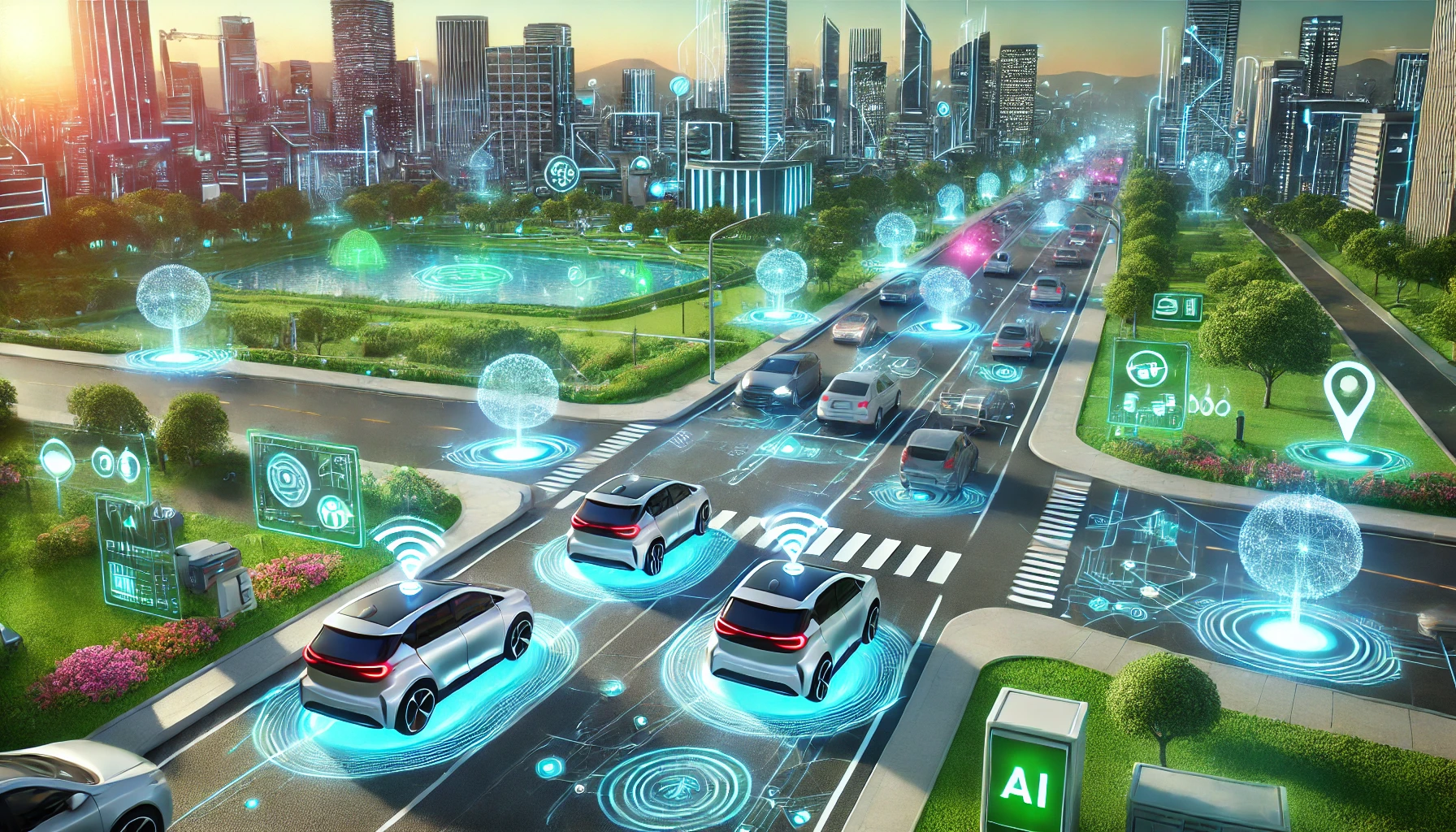- December 3, 2024
Smart Cars and Automated Solutions: Driving the Future of Mobility

Smart Cars and Automated Solutions: Driving the Future of Mobility
The concept of Smart Cars and Automated Solutions is transforming the automotive world. These technologies combine artificial intelligence (AI), connectivity, automation, and sustainability to create safer, more efficient, and eco-friendly vehicles. Let’s explore the key features, benefits, challenges, and future trends of this rapidly evolving industry.

Features of Smart Cars
Smart cars are equipped with cutting-edge features that make them highly intelligent and user-friendly:
- Advanced Driver Assistance Systems (ADAS): Lane-keeping, adaptive cruise control, and automatic emergency braking ensure safety.
- Internet Connectivity: Real-time traffic updates, GPS navigation, and seamless integration with smart devices.
- AI-Powered Personalization: Customized settings for music, temperature, and driving preferences.
- Electric and Hybrid Powertrains: Energy-efficient options for sustainable driving.
Levels of Vehicle Automation
Automation in vehicles is categorized into five levels:
- Level 0: No automation; full human control.
- Level 1: Driver assistance, like cruise control.
- Level 2: Partial automation, e.g., self-parking.
- Level 3: Conditional automation with limited human intervention.
- Level 4-5: High to full autonomy, where vehicles drive without any human input.
Role of Artificial Intelligence in Cars
AI plays a pivotal role in smart cars by enabling:
- Predictive Maintenance: Alerts for potential issues to prevent breakdowns.
- Route Optimization: Efficient navigation based on real-time traffic data.
- Driver Behavior Analysis: Enhancing safety by detecting fatigue or distractions.
Benefits of Automated Driving Solutions
- Enhanced Safety: Reduced human error with automated systems.
- Efficiency: Better fuel economy and time-saving through optimized routes.
- Convenience: Stress-free driving with autonomous features.
Challenges in Smart Car Adoption
Despite the benefits, certain challenges hinder widespread adoption:
- High Costs: Advanced technology increases production costs.
- Cybersecurity Risks: Vulnerabilities in connected systems.
- Regulatory Issues: Lack of standardized laws for autonomous vehicles.
Future Trends in Smart Cars
The automotive industry is heading towards:
- Integration of 5G: Faster, more reliable connectivity.
- IoT Applications: Vehicles interacting with smart cities and infrastructure.
- Battery Advancements: Longer range and faster charging for electric vehicles.
Environmental Impact of Smart Vehicles
Smart cars contribute to sustainability through:
- Reduced Emissions: Adoption of electric and hybrid vehicles.
- Efficient Driving: AI-based systems that minimize fuel consumption.
Ethics and Privacy in Autonomous Vehicles
Ethical dilemmas and privacy concerns arise with autonomous driving:
- Decision-Making in Accidents: How AI chooses the least harmful outcome.
- Data Privacy: Protecting user data from breaches and misuse.
Safety Innovations in Automated Solutions
- Collision Avoidance Systems use cameras and sensors to prevent accidents.
- Autonomous Emergency Braking (AEB): Automatically applies brakes during emergencies.
Cybersecurity in Connected Cars
Securing connected vehicles is critical:
- Encryption Technologies: Protecting communication between systems.
- Regular Updates: Ensuring software is resistant to evolving cyber threats.
Impact of Smart Cars on Traffic Management
Smart cars help reduce congestion and improve traffic flow by:
- Real-Time Communication: Cars sharing data with other vehicles and infrastructure.
- Optimized Traffic Signals: Better coordination through AI.
Conclusion
Smart Cars and Automated Solutions represent the future of transportation. From AI-driven personalization to fully autonomous driving, these innovations promise safer roads, greener environments, and unparalleled convenience. However, overcoming challenges like cybersecurity and regulatory hurdles is essential to unlock their full potential.